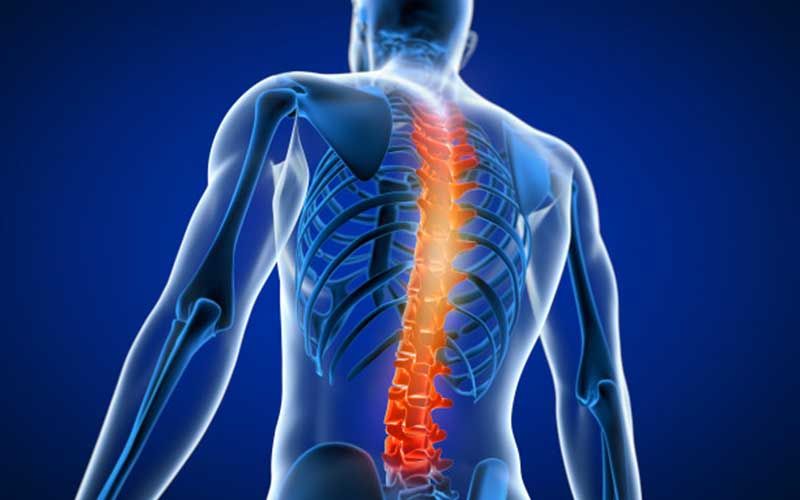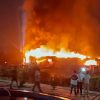Goa is abuzz with excitement as vintage bike and car owners, users, collectors and fans are decking […]

STRAIGHT TALK: TIPS TO SUPORT YOUR SPINE!
MIND & BODY, HEART & SOUL, Oct 26- Nov 01 2024 October 25, 2024World Spine Day!
As we mark World Spine Day on October 16, we bring you some straight talk with Dr Amit Dias, who says “We need to ensure that that we make efforts to support our spine”. This week he offers practical tips for spine care. It is extremely valuable advice for everyone striving to maintain a healthy spine. You will also get to know about “text neck” and what we need to do to prevent it…
Q&A interview with Dr Amit Dias
Goan Observer: On World Spine Day let’s get straight into the topic, could you start by helping us understand the human spine?
Dr Amit Dias: Sure!! The human vertebral column or spine, is a complex structure made up of 33 vertebrae divided into five regions: cervical (neck), thoracic (upper back), lumbar (lower back), sacral (pelvis), and coccygeal (tailbone).
It plays a key role in supporting the body’s weight, protecting the spinal cord, and enabling a wide range of motion. One unique feature of the human spine is its S-shape curvature, which helps balance the body and absorb shock during movement. Compared to other species, particularly quadrupeds, the human spine is adapted for an upright posture and bipedal locomotion. Animals that walk on four limbs have a more horizontal alignment of the spine, while ours is vertical, making it more vulnerable to stresses such as gravity and daily activities like sitting and standing.
Q: What pressures are exerted on the spine, and how does age-related degeneration affect it?
A: The spine is subjected to continuous pressure from body weight, movement and posture. This can lead to wear and tear, especially in areas like the lumbar spine, which supports the most weight. As we age, the discs between our vertebrae lose hydration, elasticity and flexibility. We need to be proactive by taking measures for spine care, particularly as we age.
Q: How can we protect the spine? What does spine care include?
A: Protecting the spine requires a combination of good posture, exercise, proper lifting techniques and healthy lifestyle habits. Here is a simple way to remember the tips for SPINE CARE:
S – Strengthen core muscles to support the spine.
P – Practice good posture at all times.
I – Invest in ergonomic furniture and setups.
N – Never lift heavy objects improperly – bend your knees, not your back.
E – Engage in regular physical activity and spine-stretching exercises.Yoga can help.
C – Control your weight to avoid putting extra pressure on the spine.
A – Avoid smoking as it accelerates disc degeneration.
R – Rest in a proper sleeping position with good mattress support.
E – Environment safety — avoid accidents, falls that can injure the spine.

Q: What are the various spine related problems?
A: Spinal problems can range from acute injuries to chronic conditions. Some common issues include:
• Herniated discs: When the cushion-like discs between the vertebrae rupture or slip, they can compress nerves, leading to pain.
• Scoliosis: A sideways curvature of the spine that can develop during growth or adulthood.
• Spinal stenosis: Narrowing of the spinal canal, putting pressure on the nerves.
•Osteoarthritis: Degeneration of the joints in the spine, leading to pain and stiffness.
• Sciatica: Compression of the sciatic nerve, leading to pain radiating down the leg.
• Osteoporosis: Weakening of bones, which can result in fractures, especially in the spine.
• Infections such as tuberculosis: Post’s spine it can damage the nerves and the vertebrae.
Q: Why is smoking injurious to the spine?
A: Smoking accelerates the degeneration of spinal discs by reducing blood flow and oxygen supply to the spine due to atherosclerosis. Nicotine is also known to be responsible for its wear and tear. Additionally, smoking can interfere with bone healing after spinal surgeries or fractures. It also increases the risk of osteoporosis, making the spine more vulnerable to fractures. Stop smoking is the advice I would give everyone.
Q: What tips would you give to someone for safeguarding the spine while sleeping?
A: When it comes to protecting your spine while sleeping, a few key points are essential:
- Choose a supportive mattress: A mattress that supports the natural curvature of the spine is crucial. It should neither be too firm nor too soft.
- Use the right pillow: The pillow should keep your head in alignment with your spine. Side sleepers should use a thicker pillow to fill the space between their neck and shoulder.
- Sleeping position: Sleeping on your back with a pillow under your knees can relieve pressure on your lower back. For side sleepers, placing a pillow between the knees can help maintain spinal alignment.
Q: We read about neck issues in people due to mobile phone usage. Can you elaborate?
A: Yes, “text neck” is becoming common these days. It refers to the strain on the neck and spine caused by constantly looking down at phones or other devices. Over time, this forward head posture can lead to pain, stiffness and even damage to the cervical spine.
When we bend our neck forward, the weight of the head on the spine increases significantly due to the forces acting on the cervical spine. On average, the human head weighs around 4.5-5.5 kg. However, as the neck bends forward, the effective weight exerted on the spine increases dramatically:
• 15-degree tilt: The head exerts about 12 kg of force.
• 30-degree tilt: The force increases to approximately 18 kg.
• 45-degree tilt: The force reaches 22 kg.
• 60-degree tilt: The force can go up to about 27 kg.
Q: That’s a lot of weight, what can be done to prevent “text neck?”
A: Here are some precautions to be taken to prevent ‘text neck’:
• Hold devices at eye level instead of looking down.
• Take frequent breaks and stretch your neck.
• Strengthen neck and upper back muscles with exercise.
• Maintain good posture while sitting or standing.
Q: What is ergonomics, and can it be used to protect the spine?
A: Ergonomics as I referred while explaining the Tips on Spine Care, is the science of designing a workspace that optimizes comfort and reduces strain on the body. In terms of spine health, ergonomics focuses on proper alignment of the body while sitting, standing or working. Key ergonomic tips for spine protection include:
• Use a chair that supports your lower back.
• Ensure your computer screen is at eye level to avoid slouching.
• Keep your feet flat on the floor and your knees at a right angle.
• Avoid sitting for prolonged periods; take breaks to stand, stretch, and walk.
Q: What is your message to the readers on World Spine Day?
A: On World Spine Day I urge everyone to prioritize their spine health. The spine is your body’s central support structure, and neglecting it can lead to chronic pain and reduced mobility as you age. Small changes in posture, regular exercise, and mindful habits like proper lifting techniques and ergonomics can go a long way in safeguarding your spine. Remember the tips I gave you on spine care!
















